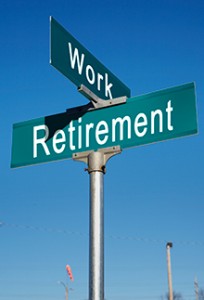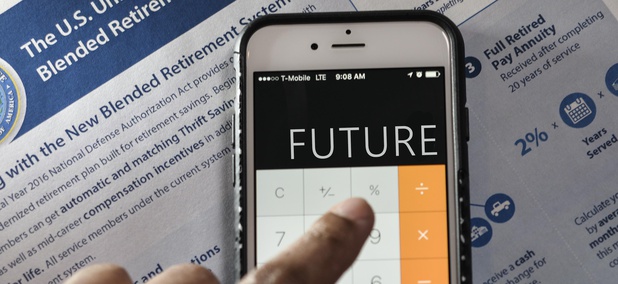What happens when a FERS employee wishes to retire prior to meeting all of the full eligibility requirements?
In this article, I’ll share how a FERS employee — who may be considering retiring under Minimum Retirement Age (MRA)+10 retirement rules — may be affected by swift penalties.
Full eligibility to retire
Let’s start with federal employees being fully eligible to retire under FERS by meeting all of the normal requirements. You’ll need to meet one of three age and service year combinations, and it doesn’t matter which one you meet. As long as you’ve met one of them, then you’re good to go. You’ll need to be at least age 62 with at least five years of service, at least age 60 with at least 20 years of service, or at least your minimum retirement age with at least 30 years of service.
That Minimum Retirement Age (MRA) is a sliding scale somewhere between the age of 55 and 57, and it depends on the year in which an employee was born. To make this easy for you, here’s a link to the MRA chart provided by OPM, if you’re not familiar with what your MRA is.
How does MRA+10 work?
The concept of “MRA+10” comes into play when someone has met their MRA, but has not met the 30-year requirement to be fully eligible to retire. In this case, the employee simply 10 years of service to be able to retire under the MRA+10 rules. Again, in this scenario, we’ve got the MRA and at least 10 years of service, but not the 30 required to be fully eligible.
It probably sounds great that you’ll be able to retire with fewer years of service, but like most government programs, there’s a catch. In fact, there are actually a couple of catches that have a profound financial impact on someone who chooses to retire under these MRA+10 rules. Most importantly, the pension will be penalized by 5% for every year an employee is under age 62, and this penalty is forever.
An example of the penalty
To illustrate these consequences, let’s take a look at a scenario. Let’s say we have a FERS employee who is 57 years old and has 10 years of service. Let’s also assume that this employee has a high-3 average salary of $50,000, just to give us some numbers to work with.
If we were to calculate the earned pension, at that moment in time, we would take the $50,000, times 1%, times 10 years of service. That is the normal formula for a FERS employee. That would yield $5,000 a year. But then we have to calculate the penalty, which again, is 5% for every year the employee is under age 62, which for this person is five years. The penalty is 25% of the pension. If we take the original $5,000 a year that we calculated, we subtract out 25% of it to get a pension of $3,750 per year.
How to avoid the penalty
Other than working long enough to be fully eligible, there is a way to avoid the penalty, but it might feel like a penalty, too. In the scenario that we just outlined, we have an employee who’s 57 with 10 years of service. We know the pension before the penalty was $5,000 a year. If we want to avoid being hit with that 25% penalty that we calculated, there is a way to do it. The employee could voluntarily postpone receipt of their pension until age 62.
This is different than a deferred pension, so if you’re looking up rules, don’t look up deferred pensions. This is a voluntary postponement of the receipt of that pension. In this scenario, this person by trying to avoid the penalty by voluntarily receiving no pension between age 57 and age 62, but once the employee draws the pension at 62, they would get the full $5,000/year, not the penalized amount of the $3,750 that we calculated earlier. This seems like it should be good news, but it’s also a long time to go without a pension. In fact, if they go without the pension for 5 years, they would have forgone $18,750 in pension money and it will take them 15 years to regain what they lost in this voluntary postponement.
Scenarios where we see this typically work well for a federal employee, is when someone is not truly retiring. The employee simply wants to leave federal service to go take another job. Maybe the employee got an offer with a contractor or a private company, and in that scenario where the employee is going to receive another paycheck, he/she might not actually need the income between 57 and 62, because he/she will have the paycheck from the new employer. So, retiring under MRA+10 might be a good fit for some employees in certain circumstances.
Still, there are catches.
The other consequences
During the time that an employee is not drawing the pension (so in this example from age 57 to 62), the employee will not be covered under the Federal Employees Health Benefits Program (FEHB), and will not be covered under the Federal Employees Group Life Insurance Program (FEGLI) either. These are huge considerations for employees who are reliant on FEHB and FEGLI programs to make certain they are covered if something should happen to them. The good news is once the employee begins drawing the pension, like in this example we used age 62, the FEHB and FEGLI coverage will be restored at that time.
There’s another benefit, however, that cannot be restored and that’s the FERS Special Retirement Supplement. This is the program that looks like Social Security, but it’s paid between the time an employee retires and the time they turn 62. Anyone retiring under the MRA+10 rules will forfeit any payment from the Special Retirement Supplement, and that may never be restored. It’s another piece that the employee will have to give up and take under consideration when deciding if MRA+10 is the way to go.
A slight change to the example
There are some scenarios where this might play out a little bit differently, or where the penalty is not quite so steep. Let’s take a look at another example. We’ll circle back to the original scenario and change just one thing. Remember, this person is 57 years old, so they’ve met their MRA. But let’s say, instead of this person having 10 years of service, that now they have 20. They’re still not fully eligible to retire, but let’s see how things look.
Of course, since there are more years of service, we know the pension will naturally be higher. We would take that $50,000 high-3 that we used before, times 1%, times 20 years, and that yields a $10,000 a year pension, before penalties are assessed. This person is still five years under age 62, so they will still get a 25% penalty, which now is $2,500. It’s a higher dollar amount that the employee is being penalized, because the pension is higher.
If this person wanted to voluntarily postpone receiving this pension to avoid the penalty, they would only need to wait until age 60 to begin to draw it. The reason is that at 60, this employee will have 20 years of service at that moment in time, which makes them fully eligible to retire with no penalties.
All of the other consequences I mentioned earlier still remain. This employee would still lose FEHB and FEGLI while they’re not drawing the pension, but again, would be restored once the pension starts at 60. And of course, the Special Retirement Supplement will still be forfeited, so no money will come out of that program in either scenario.
Don’t confuse MRA+10 with deferred pensions
I do want to make one minor point of clarification, just because there seems to be some confusion with MRA+10 rules and what’s called a “deferred retirement.” Let’s say you’re a federal employee who is age 45. You have 10, or 20, or more years of service, and you’re ready to leave before your MRA. That’s called a deferred retirement, and I’ll cover that in a later article, because those rules are very different for that group.
Final thoughts
For someone under FERS who has considered retiring under the MRA+10 rules, my parting guidance for you would be to consider all the implications and penalties before coming to any final decision. This might not be what you want to hear, but you may very well have to keep working to reach your full eligibility rules in order to have the best retirement for your situation. Again, that might not be a popular answer, but the numbers are a real reality check in this whole decision. Math doesn’t lie.
Oftentimes, I’m the bearer of bad news when it comes to big decisions like this. I am a big believer that I’d rather temper those dreams today, before you make a huge mistake, than to see you struggle to do some serious damage control after that decision has already been made.
While retiring with fewer years of service may sound like a good idea, there are some hefty consequences imposed. I hope this article will help you consider those important consequences and decide if retiring under the FERS MRA+10 provision is the right choice for you. So, now with all this being said, if you would like us to run a Full retirement analysis please visit our Contact Us Page to schedule your review today.









